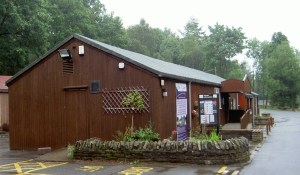While we know quite a lot about the inmates – who were recruited precisely because they fell into pre-defined categories – it isn’t always easy to find out much about those who managed them. This is hardly surprising for the nineteenth and early twentieth century labour colonies, where the records are scattered and often sparse; but we don’t know a great deal about the more organised and bureaucratic twentieth century systems either.
The largest system in Britain was run by the Ministry of Labour in the fifteen years before the Second World War. Mythology says that the managers were largely ex-military men, a view repeated recently by Del Roy Fletcher, and it is quite possible that some had seen service in the Great War. However, civil service regulations required the Ministry to recruit its camp managers from within.
As one senior official pointed out, work camp managers needed rather different qualities from those usually found in the civil service – or the army. Dealing with up to 200 unemployed men, he said, required ‘very special qualifications’, including an ‘ability to handle men with sympathy, tact, patience and firmness’.
We know a little about Albert Rendle, who managed first the Hamsterley camp in County Durham, and then took on Cairnbaan in Argyll in 1939. Eve Rendle, his daughter, has written a brief account based on a collection of her father’s letters. She adds some useful detail – for example, his habit of waking the trainees by playing ‘hot jazz’ over the camp loudspeakers – but doesn’t say much about the man, a career civil servant who was awarded the OBE in 1951.
So who were the camp managers? Mark Freeman, the historian, tweeted recently that hed come across a case of ‘nominative determinism’ in my study of British work camps. This was the nicely-named Mr Workman, who became manager of Cranwich Instructional Centre in June 1932.
Walter Bridgemore Workman was an Employment Clerk in the Ministry of Labour. My understanding is that he would therefore have been a permanent (or ‘established’) civil servant, who had almost certainly worked in a labour exchange. What is certain is that he transferred to the instructional centre at Shobdon, on the Herefordshire side of the Welsh border, and that he was working there when he applied for a manager’s post.
We also know that he was born on 3 December 1895, making him 36 when he was appointed and 18 when War broke out. I think he would have seen military service before moving into the new Ministry of Labour. By autumn 1933 he was manager at Bourne Instructional Centre, in Lincolnshire. As well as managing the camp’s work, he also had to select a working party of 22 men to go and build a new camp at Dalby, near Pickering in North Yorkshire; he duly sent the men, along with a football – not simply for leisure, but to allow for a ritual ‘kick-off’ at the new camp.
By May 1934, Workman was temporary manager at another newly-opened camp. By this time, the Ministry was routinely appointing experienced camp managers to oversee new camps, before appointing a permanent manager once things had settled down. ‘Things’, in this case, included smoothing the ruffled features of local residents, including the recently-widowed Mrs Frances May Fogg-Elliot of Bedburn Old Hall.
As well as a general dislike of her new neighbours, Mrs Fogg-Elliot took exception to unemployed trainees using a public footpath on her land, and to the appearance of girls in the camp at weekends. The Ministry wrote to Workman asking him to contact Mrs Fogg-Elliot, with a view to persuading her ‘to take an interest in the Centre instead of criticising us all the time’. Workman already knew the lady, whom he described as ‘full of trouble’, but took the precaution of banning trainees from the footpath.
And that is it. I do not now where Workman went after setting up Hamsterley – he was still under 40 at this stage – nor what became of him later in life; we know no more than the bare bones of his life before 1932. Like all the other camp managers, there are a few scattered mentions in the files, and precious little else.

